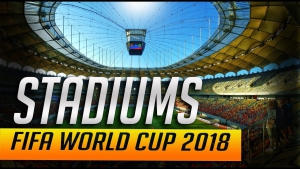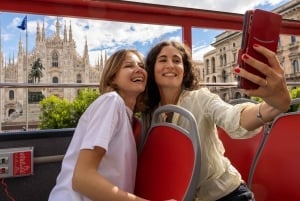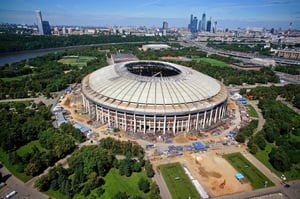2018 FIFA Worldcup. Cities and stadiums
Moscow
Book Top Experiences and Tours in Moscow:
If youʻre booking your trip to Moscow last minute, we have you covered. Below are some of the top tours and experiences! View All ExperiencesCities and stadiums
This year’s FIFA World Cup will take place across 11 cities and 12 venues, predominantly in the European part of Russia: Kaliningrad, Kazan, Moscow, Nizhny Novgorod, Rostov-on-Don, St. Petersburg, Samara, Saransk, Sochi, Volgograd and Ekaterinburg. And the list of cities could not be more distinctive; each city is very unique and offers something very special. There’s the culture and European flair of St. Petersburg, the cosmopolitan and grandiose beating heart of Moscow, the Black Sea beaches of Sochi, the ethnic and religious melting pot of Kazan, the Prussian vibes of Kaliningrad, the Volga’s vastness in Samara, the “window to Asia” that is Siberia’s Ekaterinburg, the ancient Russian architectural gems of Nizhny Novgorod, the hero city Volgograd, the sporty Mordovian capital of Saransk and Rostov-on-Don, the historical hotbed of Cossack culture.
Kaliningrad Stadium
Fans attending a game in Kaliningrad will be treated to a brand new venue - Kaliningrad Stadium. The design of the new stadium is based on Allianz Arena in Munich, which hosted some World Cup games back in 2006. The 35,000-seat, open-air stadium has a focus on green technology.
Kazan Arena
Kazan Arena, completed in 2013, is a modern entertainment venue: offices, corporate event space, a variety of food options, shopping and a fitness area are all at your service. No wonder it’s also known as a “city in the city”! The unique arena seats around 45,000 and is easily recognizable thanks to its massive HD screen adorning the front of the building.
Moscow: Luzhniki Stadium and Otkritie (Spartak) Arena
Luzhniki Stadium, initially called Central Lenin Stadium, was built between 1955 and 1956 and will host the opening match on June 14th. It was the result of the ambition of the Soviet leadership to upgrade the country’s sports facilities after the Soviet Union had tasted its first post-war successes at the 1952 Olympics. The stadium was regularly used by Spartak Moscow, lacking a home of their own, until they moved to the newly built Otkritie Arena 2014. Luzhniki Stadium got selected to host the final of the 2018 World Cup, and as a result had to undergo a large redevelopment. Redevelopment works entailed the complete reconstruction of the stands, now divided over two tiers, the removal of the running tracks, and an expanded roof structure. The characteristic exterior of the stadium has remained intact. This 81,000-seat stadium has witnessed plenty of history in the making, including the 1980 Summer Games.
The Otkritie Arena is the recently opened new home of Spartak Moscow. In its history, Spartak had never owned a proper stadium, using various stadiums around Moscow instead. This shiny new stadium in the northwest of Moscow can fit just over 45,000 people.
Nizhny Novgorod Stadium
Like many of the 2018 World Cup Stadiums, Nizhny Novgorod Stadium is currently under construction and scheduled to open shortly before the tournament. Here, you’ll get double the view: aside from all the exciting football, Nizhny’s brand new stadium will boast one of the best locations in the city overlooking the Alexander Nevsky Cathedral where the Volga and Oka Rivers meet.
Rostov Arena
The Rostov Arena is a planned new stadium for the city of Rostov-on-Don that will become the new home of FC Rostov. The Rostov Arena will be built with a capacity of 45,000 seats for the World Cup, and then scaled down afterwards to a capacity of 25,000. The design of the stadium is inspired by the ancient mounts of earth, Kurgans, that can be found in the region.
St. Petersburg Stadium
St. Petersburg Stadium, also referred to as Zenit Arena, Krestovsky Stadium and Piter Arena, is the recently opened new stadium of FC Zenit. The stadium was designed by Japanese architecture firm Kisho Kurokawa and resembles the form of a spaceship with the roof held up by four masts. It has some similarities with that of the Japanese Toyota Stadium, which was designed by the same firm. St. Petersburg Stadium is going to be one of the playing venues of the 2018 World Cup in Russia, during which it will host four first round group matches, a quarter final, a semi final, and the match for third place. It also hosted four matches during the 2017 Confederations Cup, including the final. The arena has a retractable roof and holds close to 70,000 fans, one of the largest in the tournament.
Cosmos Arena (Samara)
The Cosmos Arena, also known as Samara Arena or Samara Stadium, is the currently under construction new home of Krylia Sovetov. Complete with a monorail that will shuttle fans to and from the matches, the stadium will be an architectural marvel. It is designed to resemble a gem, an 65.5-meter high dome of translucent glass panels - so the name is no coincident. It really will be something out of this world! The arena will boast just under 45,000 seats, which will be divided over two tiers.
Mordovia Arena
Specially for the World Cup, the city of Saransk is building an arena much bigger than it would otherwise need. Seating capacity in Mordovia Arena for the World Cup will be in the 45,000 range, though the upper level seating will later be dismantled. That number will be brought down to 28,000 seats after the World Cup by removing the upper tier and turning it into a walking concourse.
Fischt Stadium
Sochi’s Fisht Olympic Stadium was built to serve as the centerpiece venue of the 2014 Winter Olympics. During the Olympics, it hosted both the opening and closing ceremony. The stadium lacked a purpose following the Games, but was selected as one of the playing venues of the 2018 World Cup. For this, the closed roof had to be opened up. The 48,000 seat stadium will host 4 group stage matches, as well as a round of 16 match and a quarter-final match.
Volgograd Arena
The Volgograd Arena is currently under construction and following this summer’s action, it will become the new home of Rotor Volgograd. The stadium is built on the site of the former Central Stadium, which used to be Volgograd’s principal stadium. Demolition of the old stadium started in late 2014, and construction of the new arena got going in the spring of 2015. During the preparation phase, a thorough inspection of the building site had to be conducted after a number of unexploded WWII bombs were found in the vicinity. The Volgograd Arena will have a capacity of 45,000 seats divided over two tiers. The cabled roof and meshed exterior are the standout features of the arena. After the World Cup, capacity will be reduced to 35,000 seats.
The Volgograd Arena is located on the banks of the Volga River just north of central Volgograd, roughly 4 kilometers from the city’s main square, the Square of Fallen Fighters, and the main railway station. It borders Volgograd’s main park, the Friendship Park, and lies a short distance away from Volgograd’s main attraction: the Motherland Calls statue.
Ekaterinburg Arena
The Ekaterinburg Arena, then still called Central Stadium, was built between 1953 and 1957. The stadium was initially a multi-sports arena, also hosting athletics and ice skating events. When it first opened, its seating capacity of 27,000 made it one of the largest in the world! It remained largely unchanged in the next decades until plans were made in the mid 2000’s to extensively redevelop the stadium. Works started in 2007, and, after multiple delays, were completed in 2011, giving the stadium an extensive make-over, but keeping the athletics track and sticking with a similar capacity as before. After Russia won the bid and Ekaterinburg was named a host city, the recently renovated Central Stadium did not meet FIFA standards, and thus new redevelopment plans had to be made. The protected external facade would have to be preserved, but otherwise the entire interior had to be rebuilt, boosting capacity to 45,000 seats. The new and rebranded Ekaterinburg Arena is expected to be completed shortly before the tournament kicks off.
How to get to Moscow and the other arenas
The Russian capital is easily reached by a direct flight from most major cities in Europe, the Middle East, Asia and North America. Fans arriving from places like South America, Africa and Australia/Oceania will need to make at least one layover somewhere. Moscow is also linked by rail with many cities in Europe like Helsinki, Paris, Berlin, Riga, Vilnius, Tallinn, Warsaw and Minsk.
If you live in Europe and are considering driving, that’s also an option, though not all roads leading to Moscow and other Russian cities are great and once in Russia you can expect quite a bit of traffic and small motorways. To cross the border, make sure all your car papers are in order. To drive in Russia, you will need to bring your driver’s license or temporary permit, your car registration documents and a basic auto insurance policy or a Green Card (the international auto insurance policy). At entry into Russia, you are required to complete a customs declaration of the temporary importation of your vehicle for the entire duration of your stay in Russia. Keep this declaration: you will need it again when you cross the frontier out of Russia. Russia’s traffic regulations are for the most part the same as the regulations effective elsewhere in Europe, with a few exceptions. You have to wait for your green light to drive at a signal-controlled intersection.
Football fans will be able to save considerable sums of money following confirmation that all train transportation between the 11 host cities will be free of charge for this summer's event. To book a ticket online one should first do two things: purchase a ticket to a football match and get himself a Fan ID, which in place will also grant a visa-free entry to the country.








